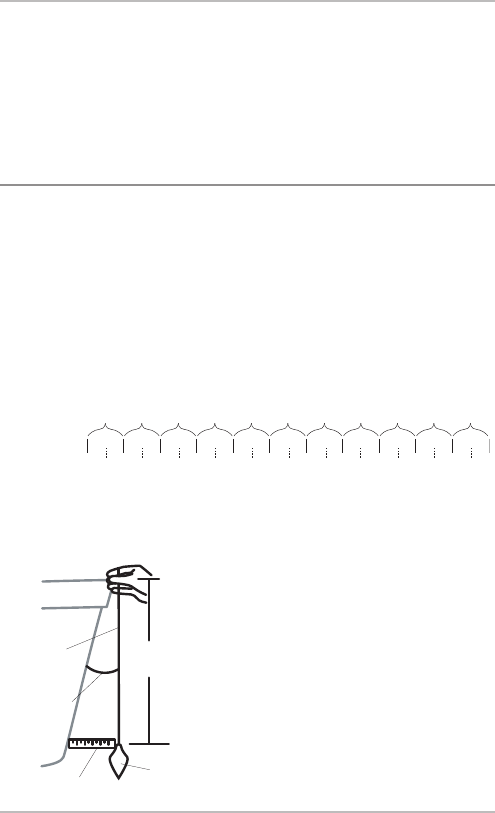
4. Make sure that the drill bit is perpendicular to the actual surface of the
transom,NOTparalleltotheground,beforeyoudrill.Usinga 5/32”bit,drill
the two holes only to a depth of approximately 1”.
NOTE: On fiberglass hulls, it is best to use progressively larger drill bits to reduce the
chanceof chipping orflakingtheoutercoating.
Assembling the Transducer and Initial Mounting
Inthis procedure,youwill assemble thetransducer using the hardware provided,
thenmount itandmakeadjustments toitsposition withoutlocking it inplace.
NOTE: Youwill initially assemble the transducerand the mounting bracket bymatching
thetworatchetstoa numberedpositiononthetransducerknuckle.Furtheradjustments
maybenecessary.
1a. If you already know your transom angle, refer to thechart below for the
initial position to use to set the ratchets (Figure 16). If your transom is
angled at 14 degrees (a common transom angle for many boats) use
position 1 for the ratchets. In either case, go to step 2.
or...
1b. If you do not know your transom angle,
measure it using a plumb line (weighted
nylon string or monofilament line)exactly
12 inches long.Hold thetop of the plumb
line against the top of the transom with
your finger, and wait until the line hangs
straight down (Figure 17). Using a ruler,
measure the distance from the bottom of
the plumb line to the back of the
transom, then use the chart (Figure 16).
NOTE: It is important to take your measurement
inthelocationshowninFigure17,fromexactly12
inches down fromthe top of the transom.
12”
TransomAngle
in degrees (°)
Measured Distance (X)
Measuring theTransomAngle
Plumb
line
Weight
Figure17
Figure16
-2 -1 0 1 2 3 4 5 6 7 8 9 10 11 12 13 14 15 16 17 18 19 20 21 22 23 24
Transom Angle (°)
Bead Alignment
Number
142531425
25 26 27
3
28 29 30
1
Measured Distance (x)
1.1cm
1/2“
0.0 cm
0“
2.5 cm
1“
4.3 cm
1 5/8“
5.9 cm
2 3/8“
7.6 cm
3“
9.3cm
3 5/8“
11.1cm
4 3/8“
12.9cm
5“
14.9cm
5 7/8“
16.9cm
6 5/8“
Transom Transducer Installation
12


















